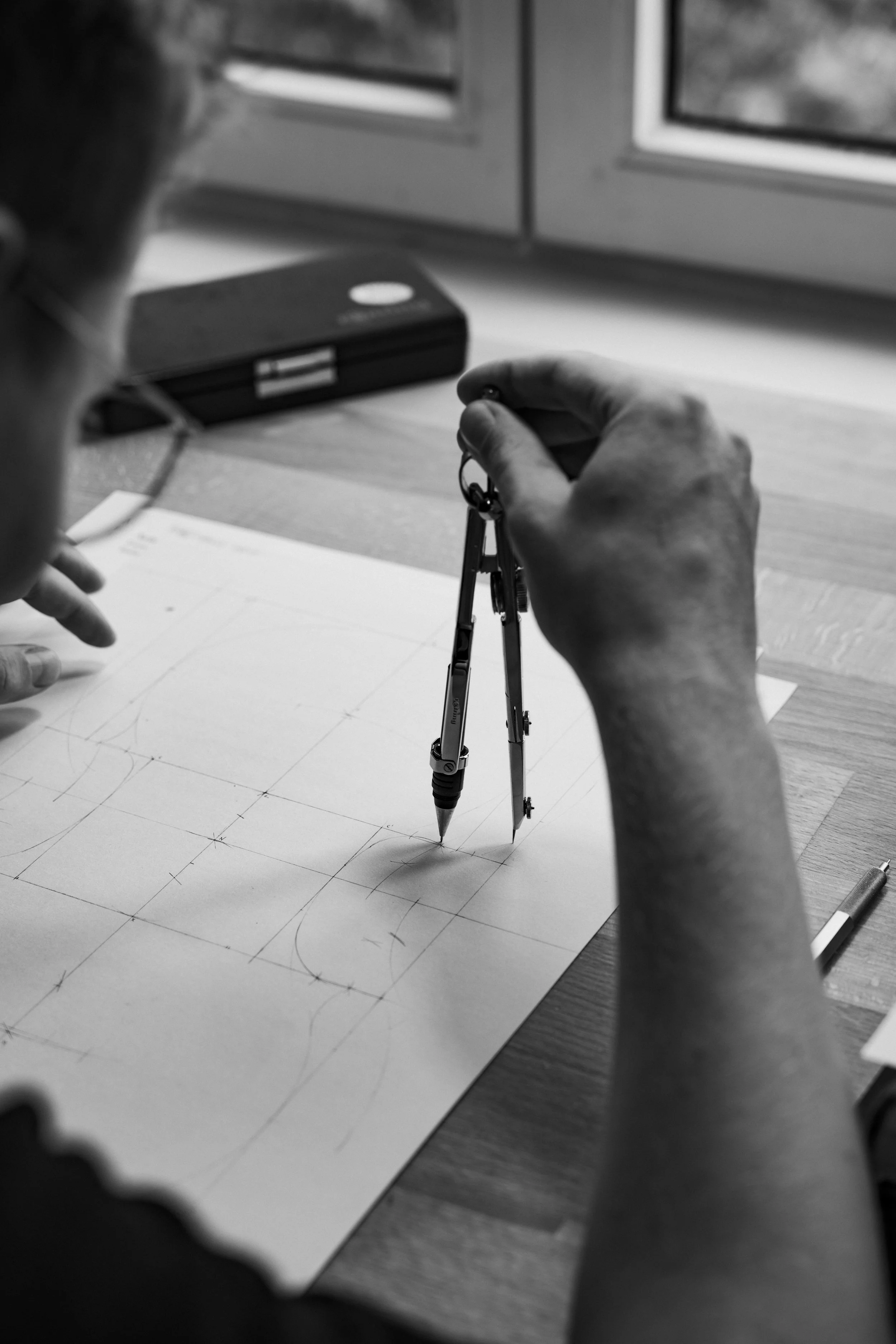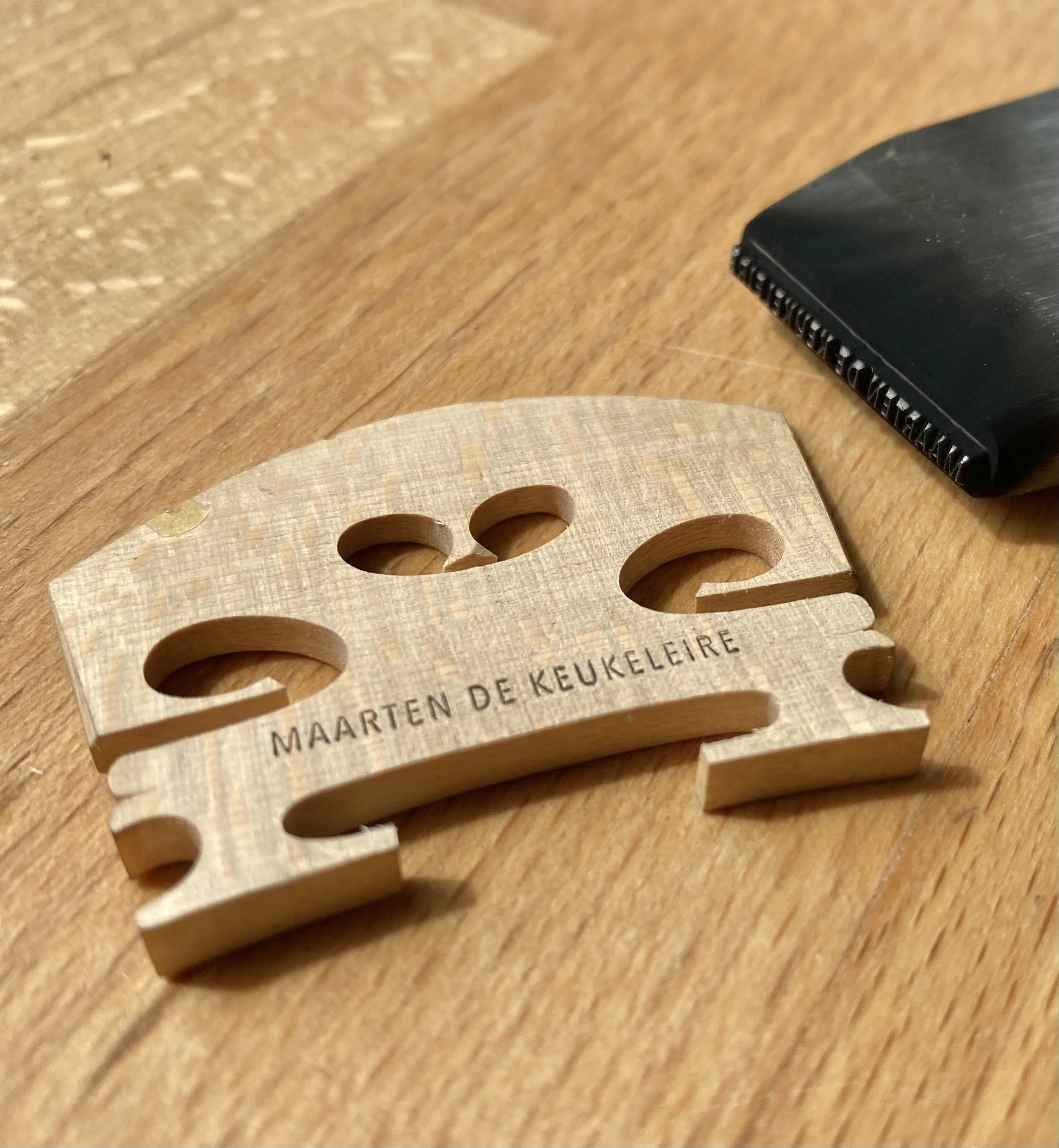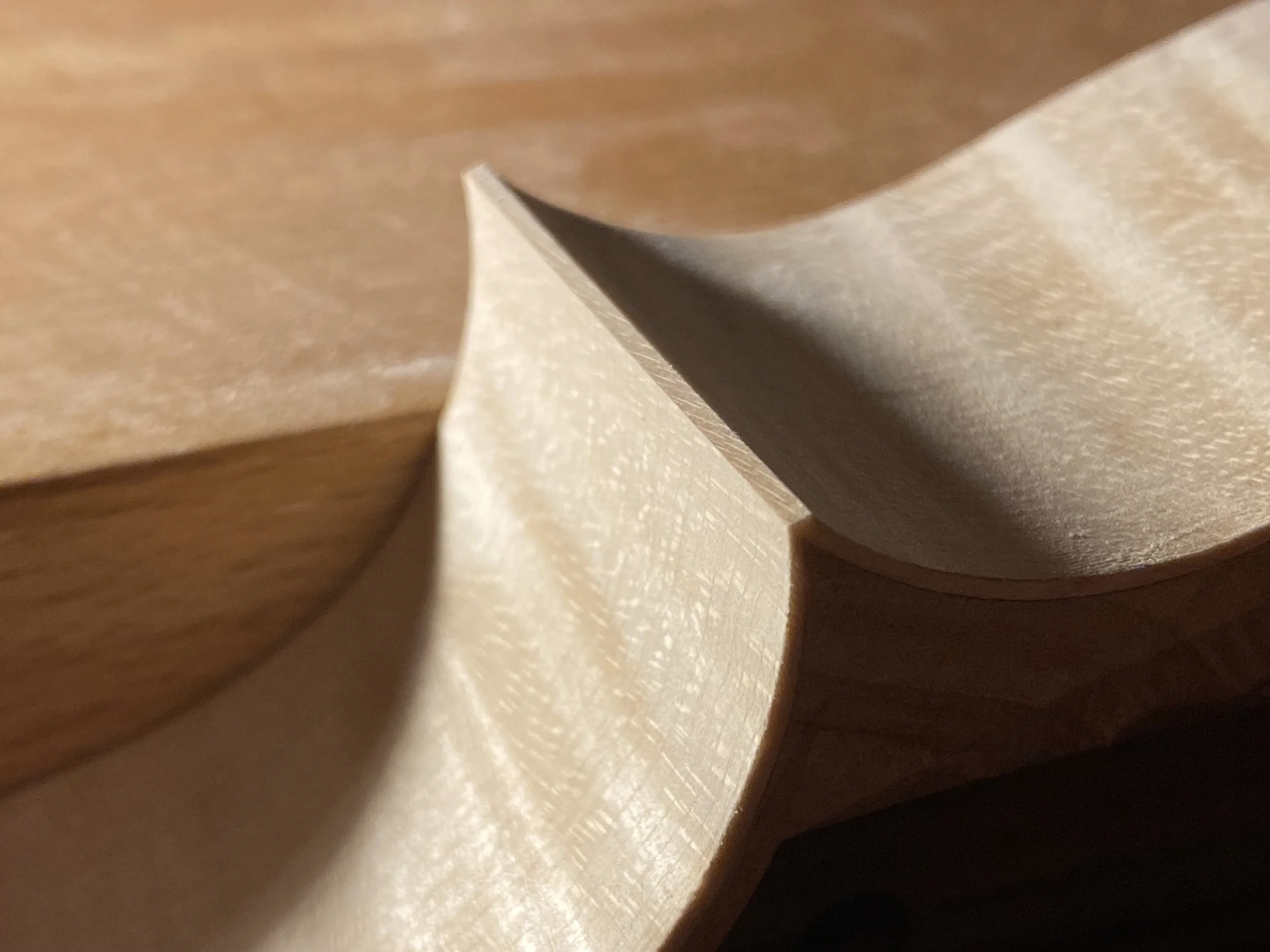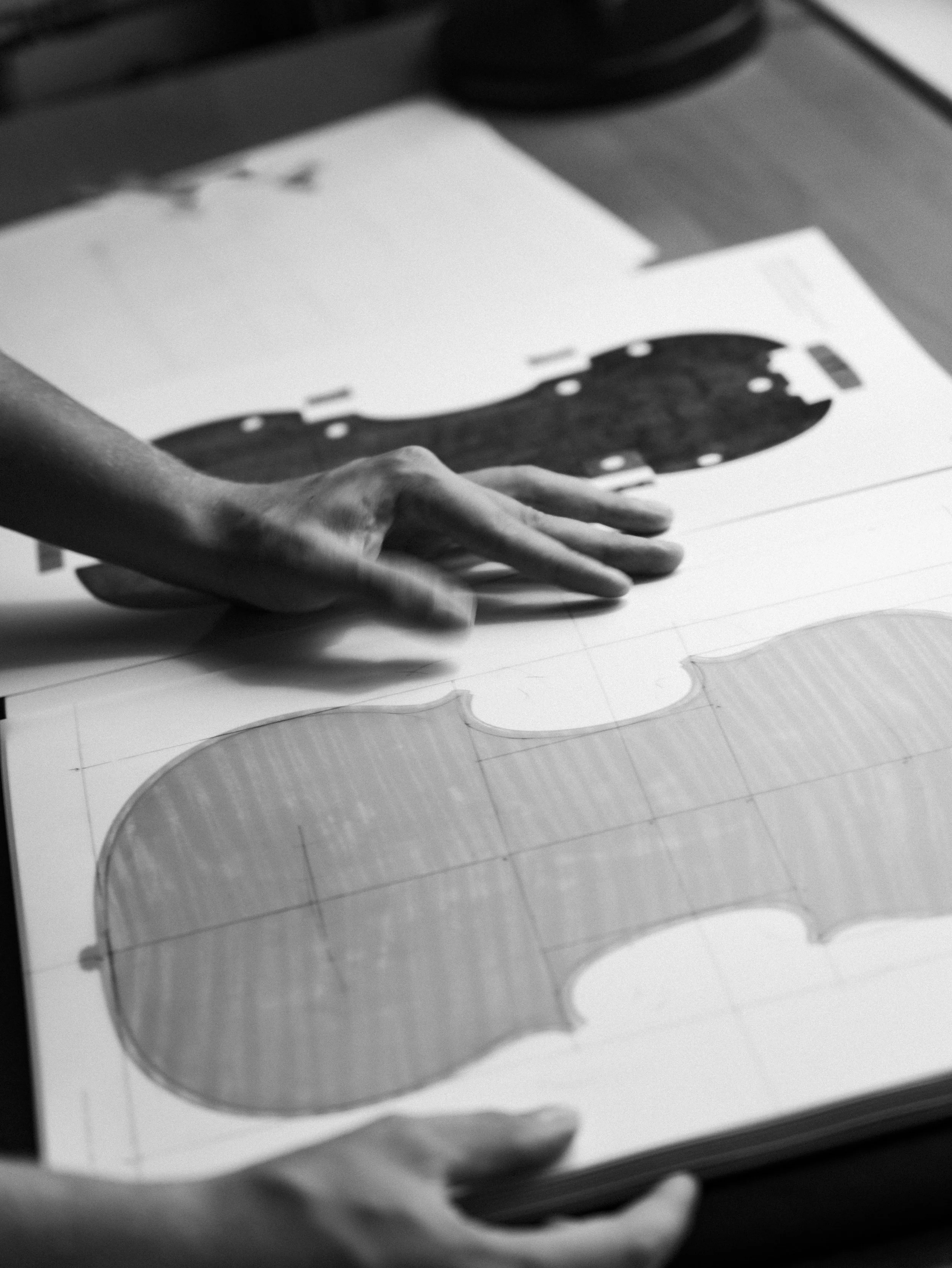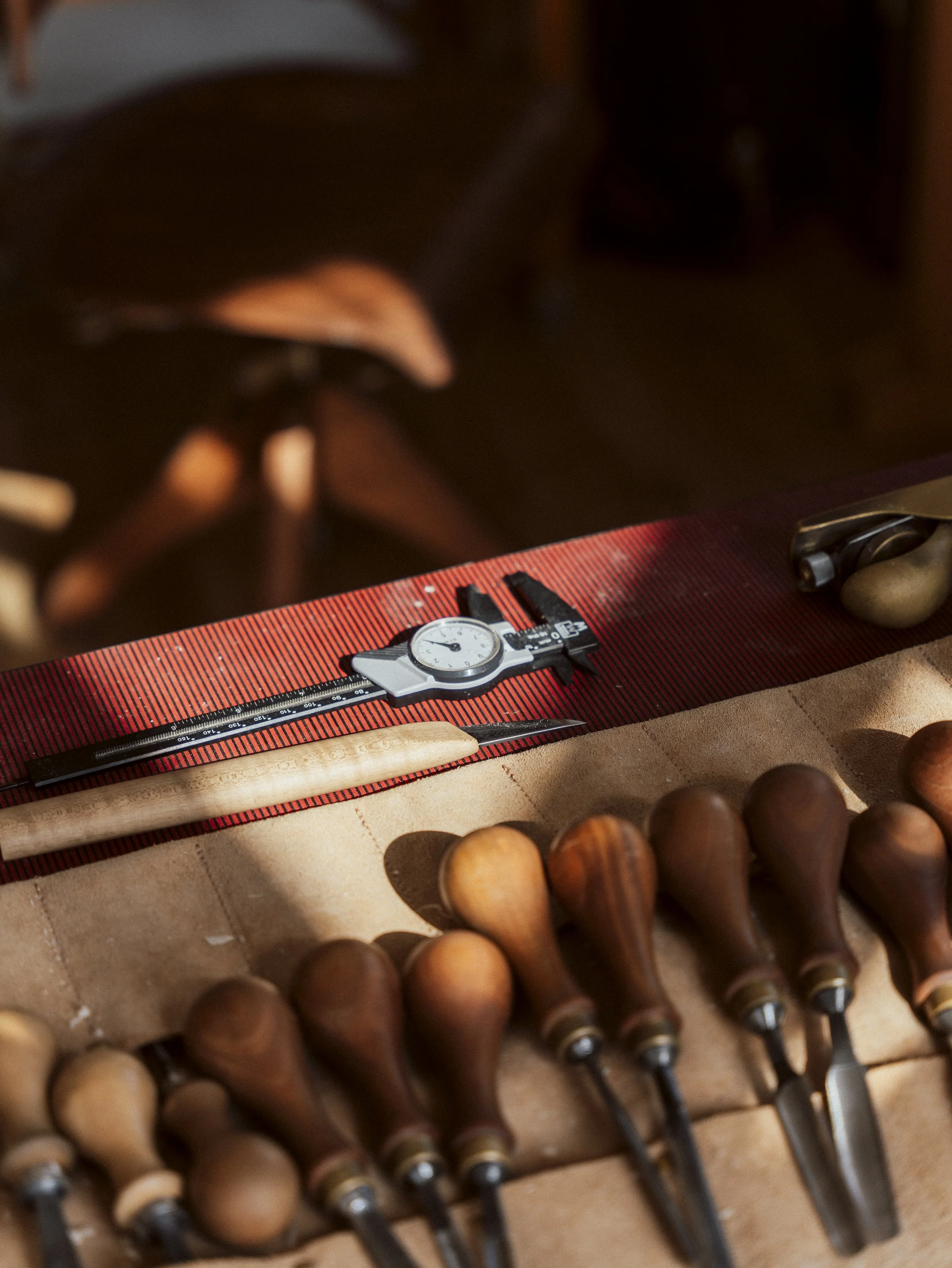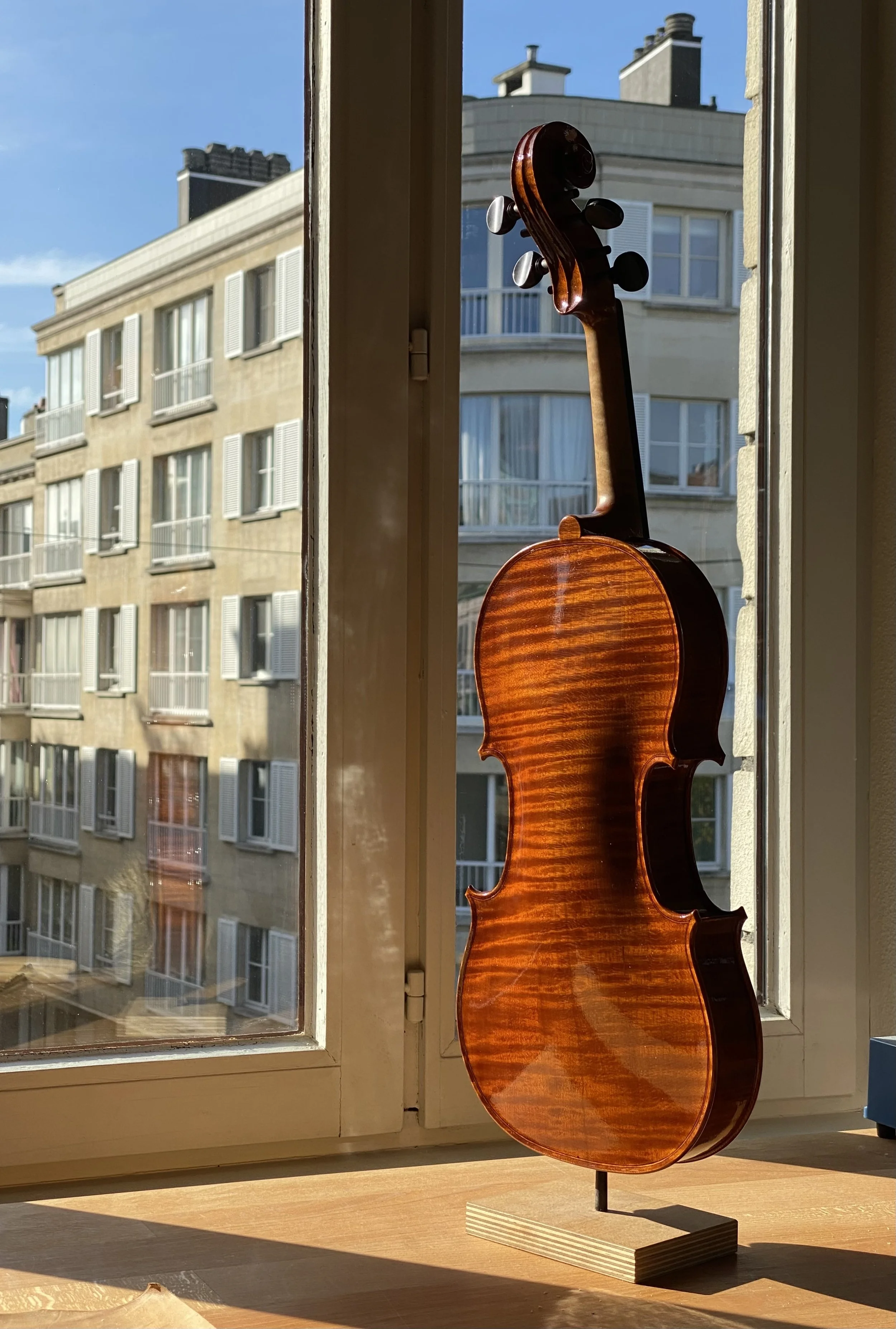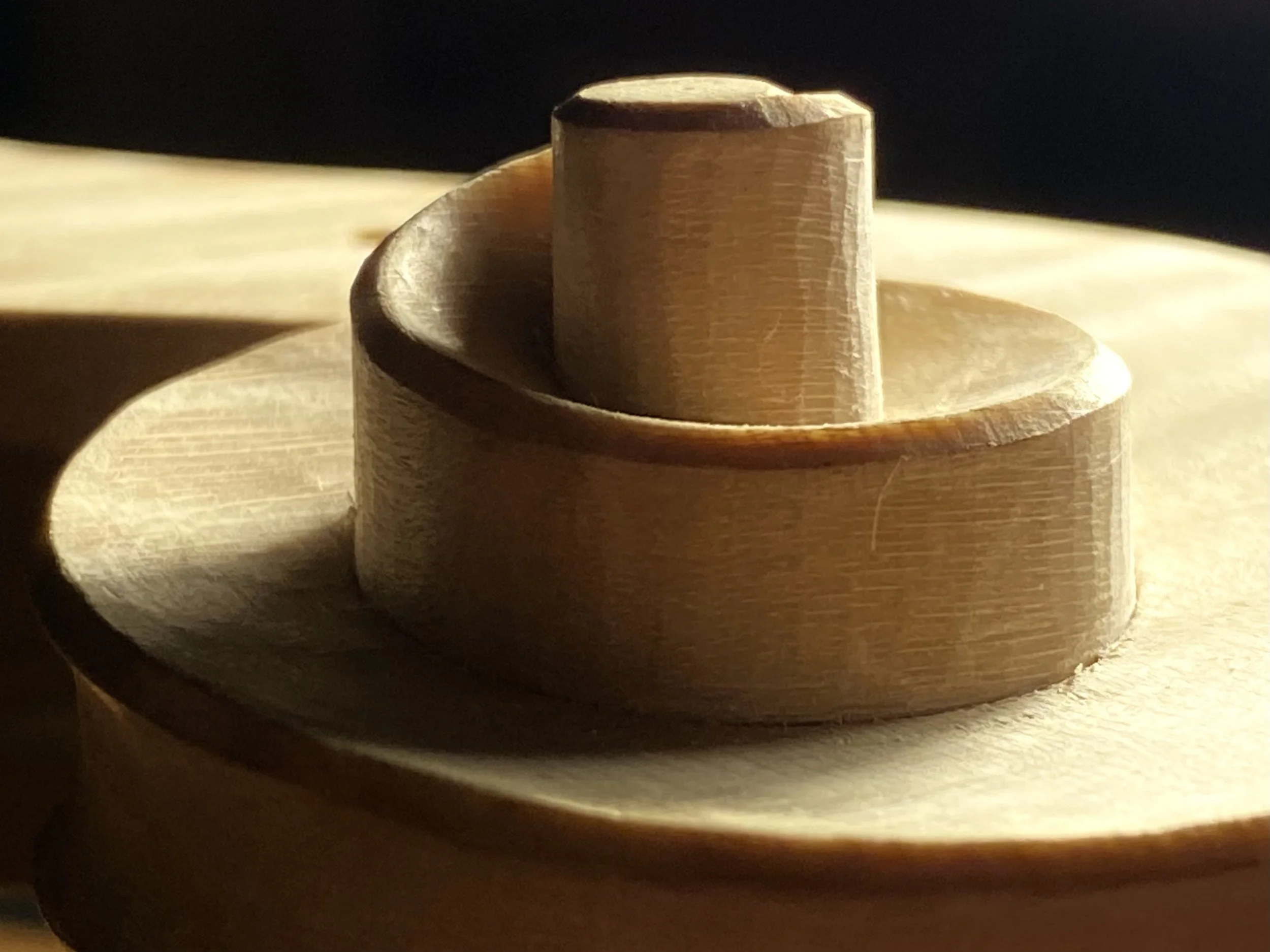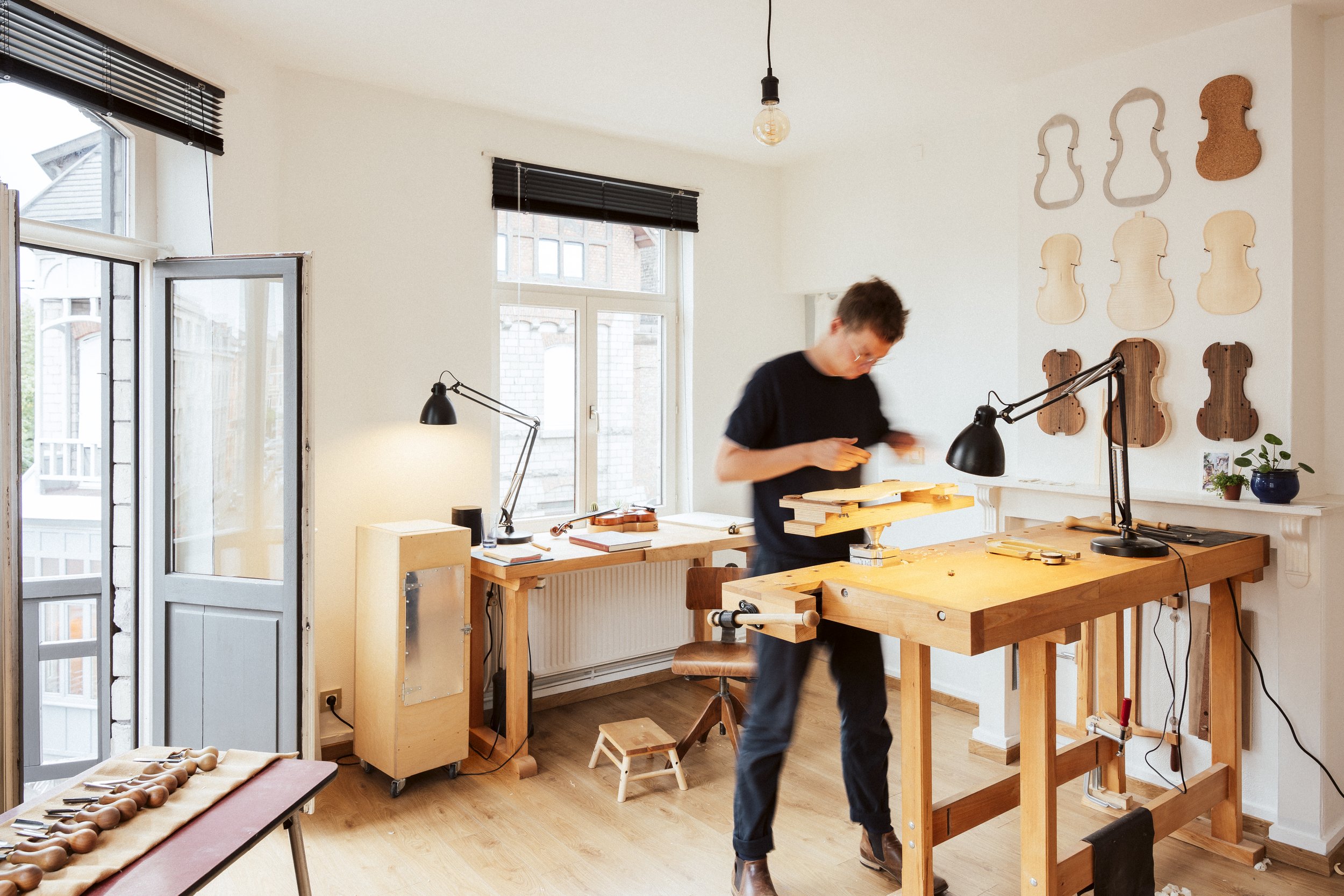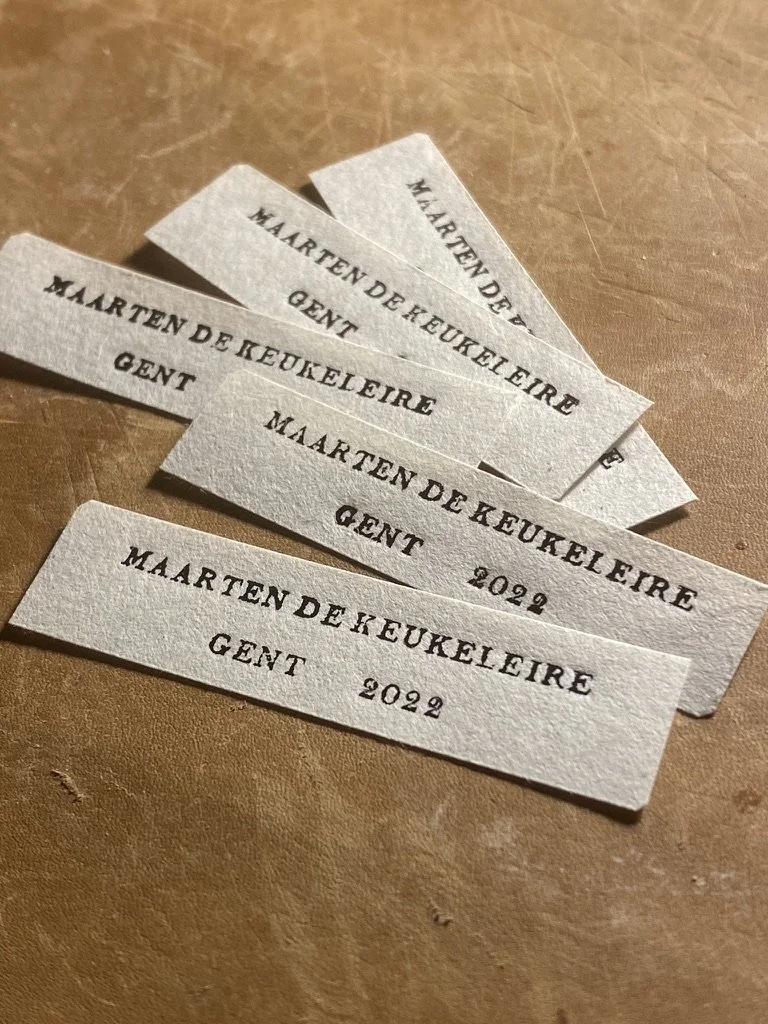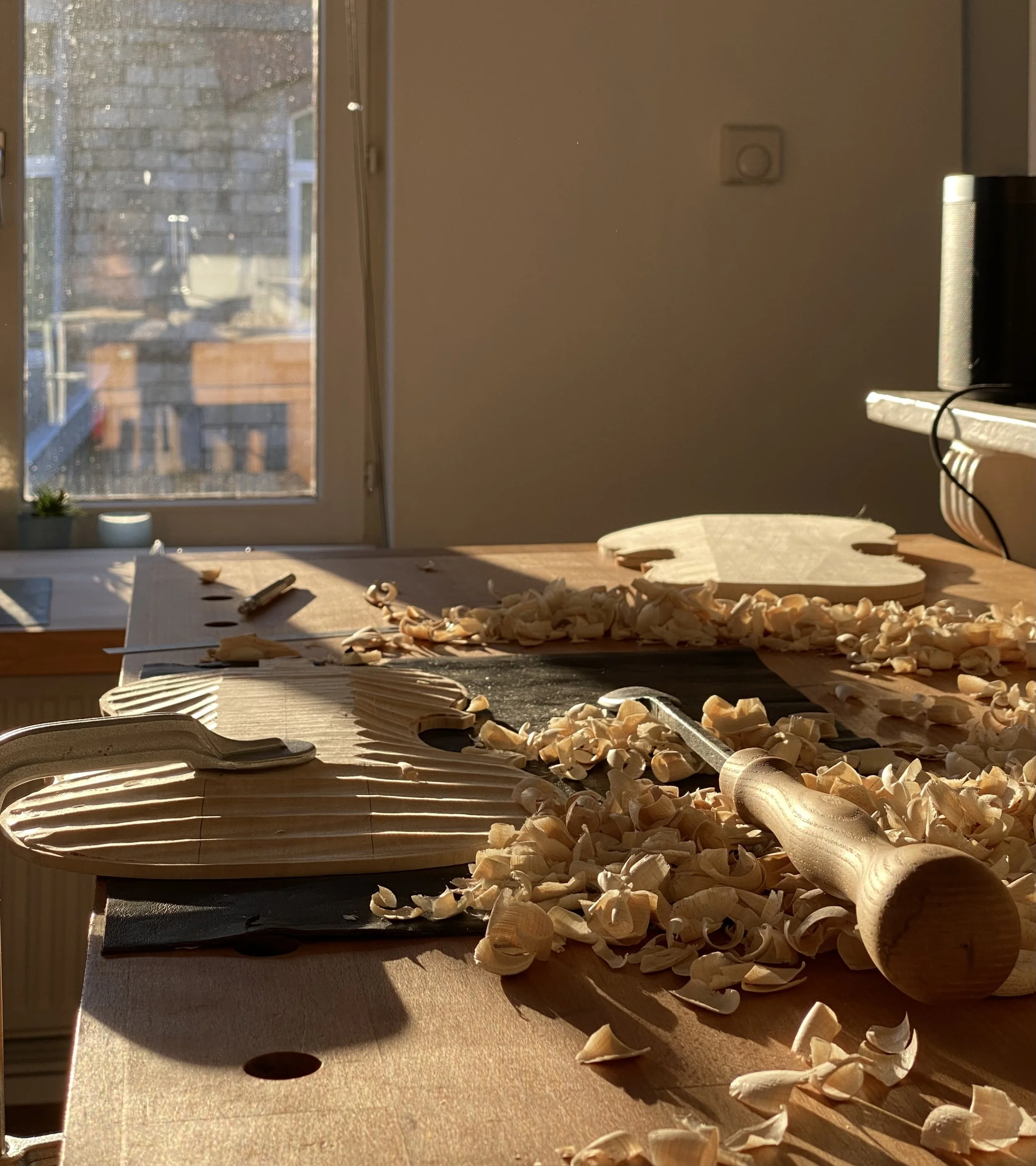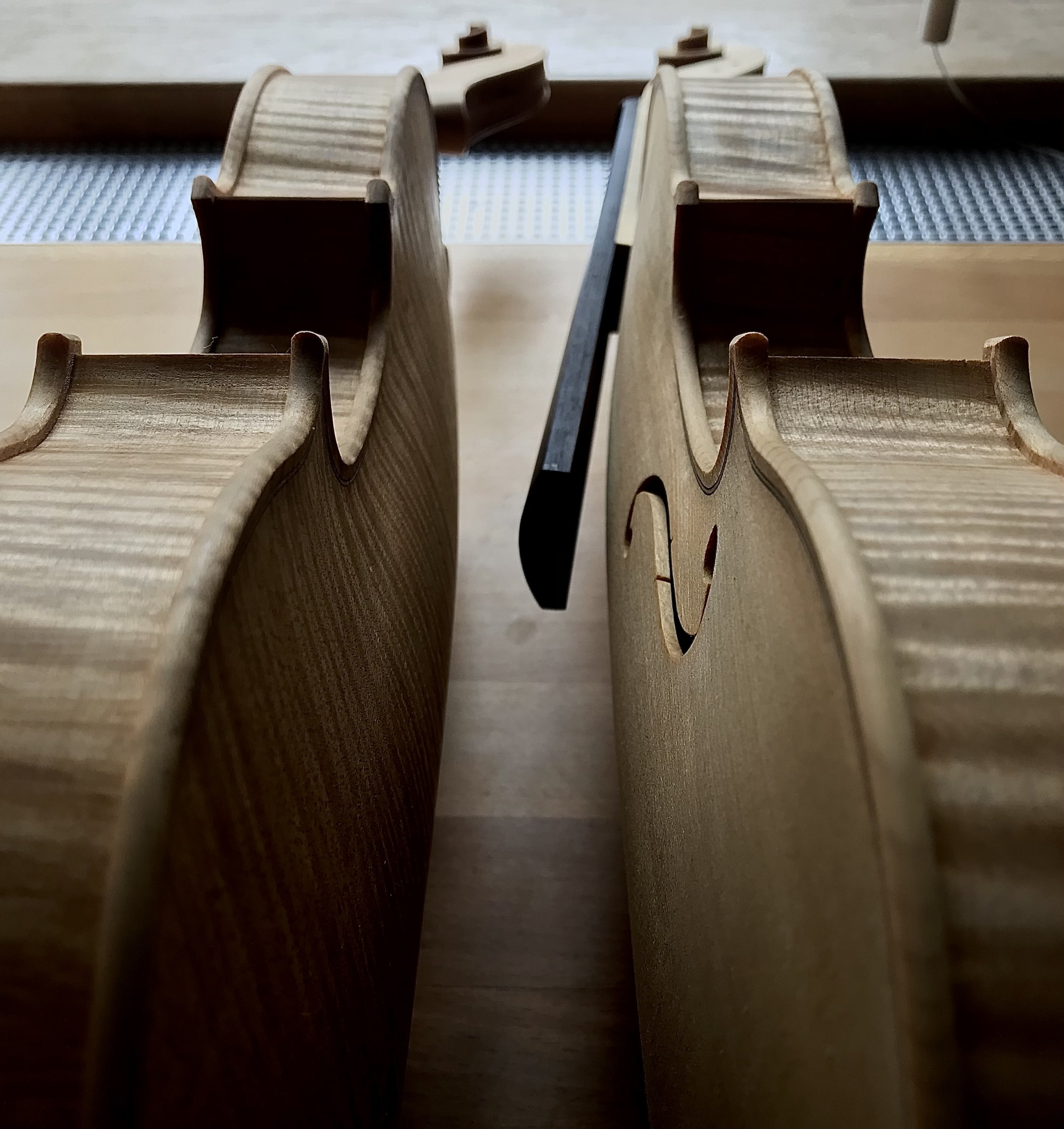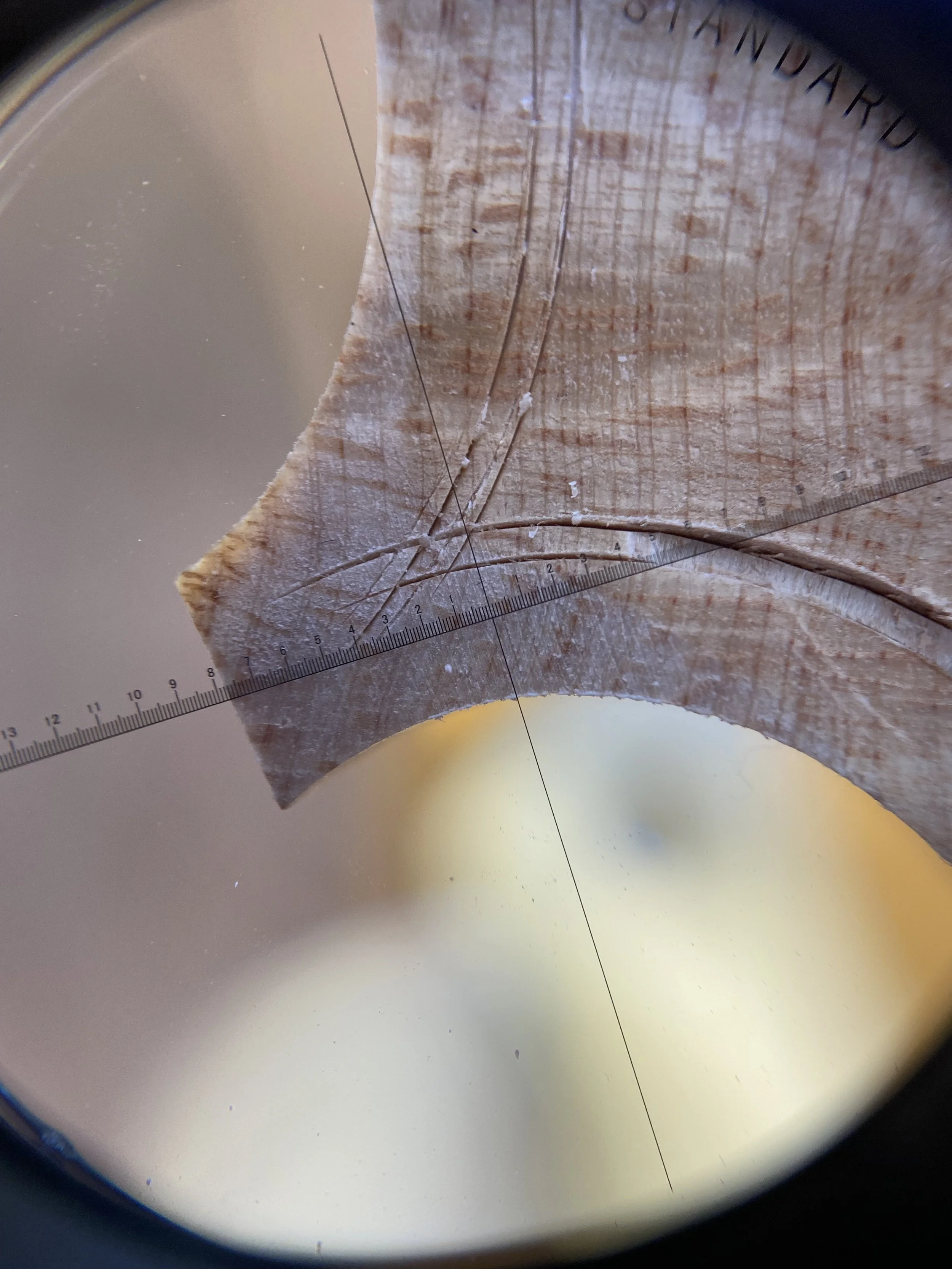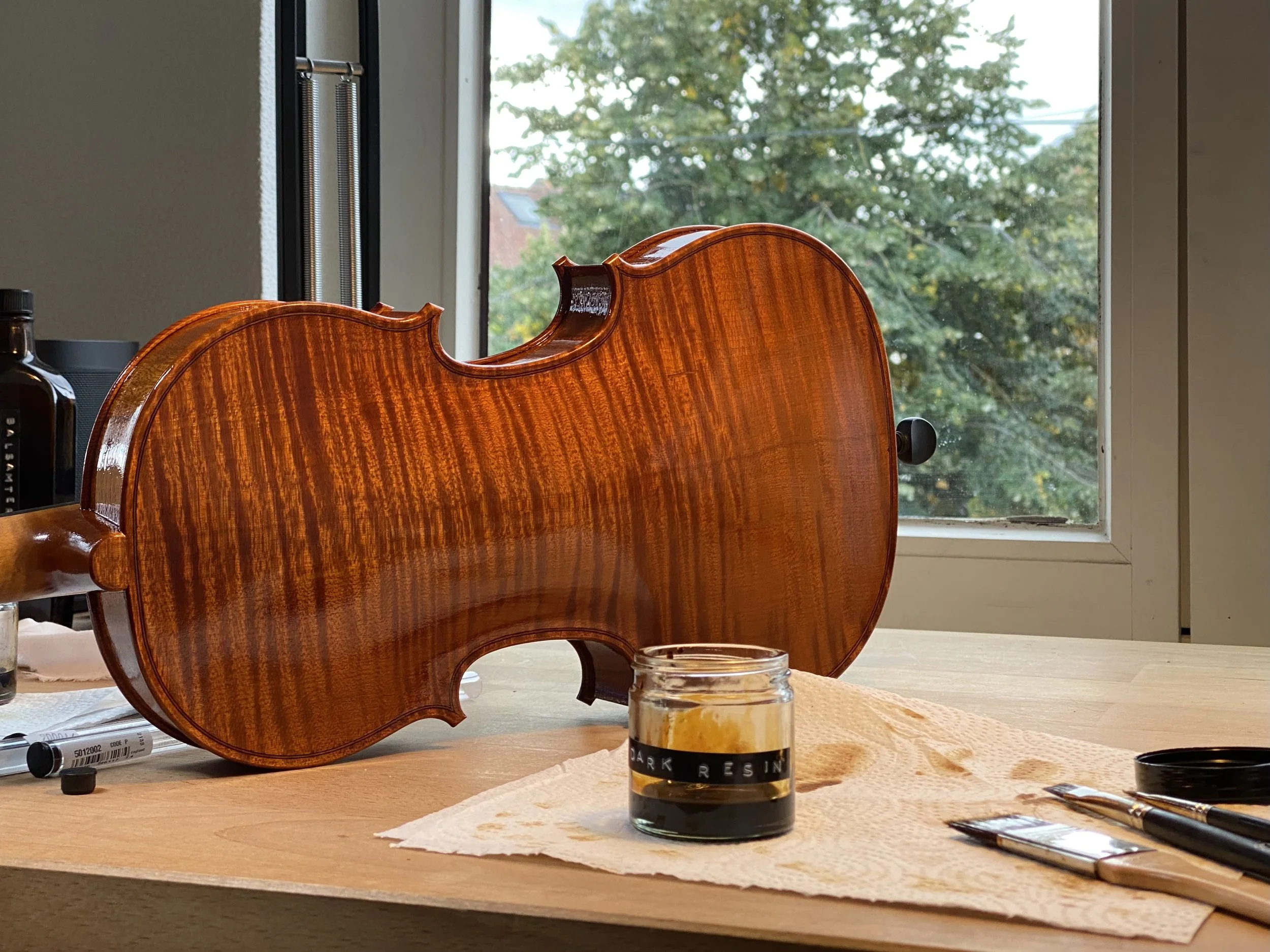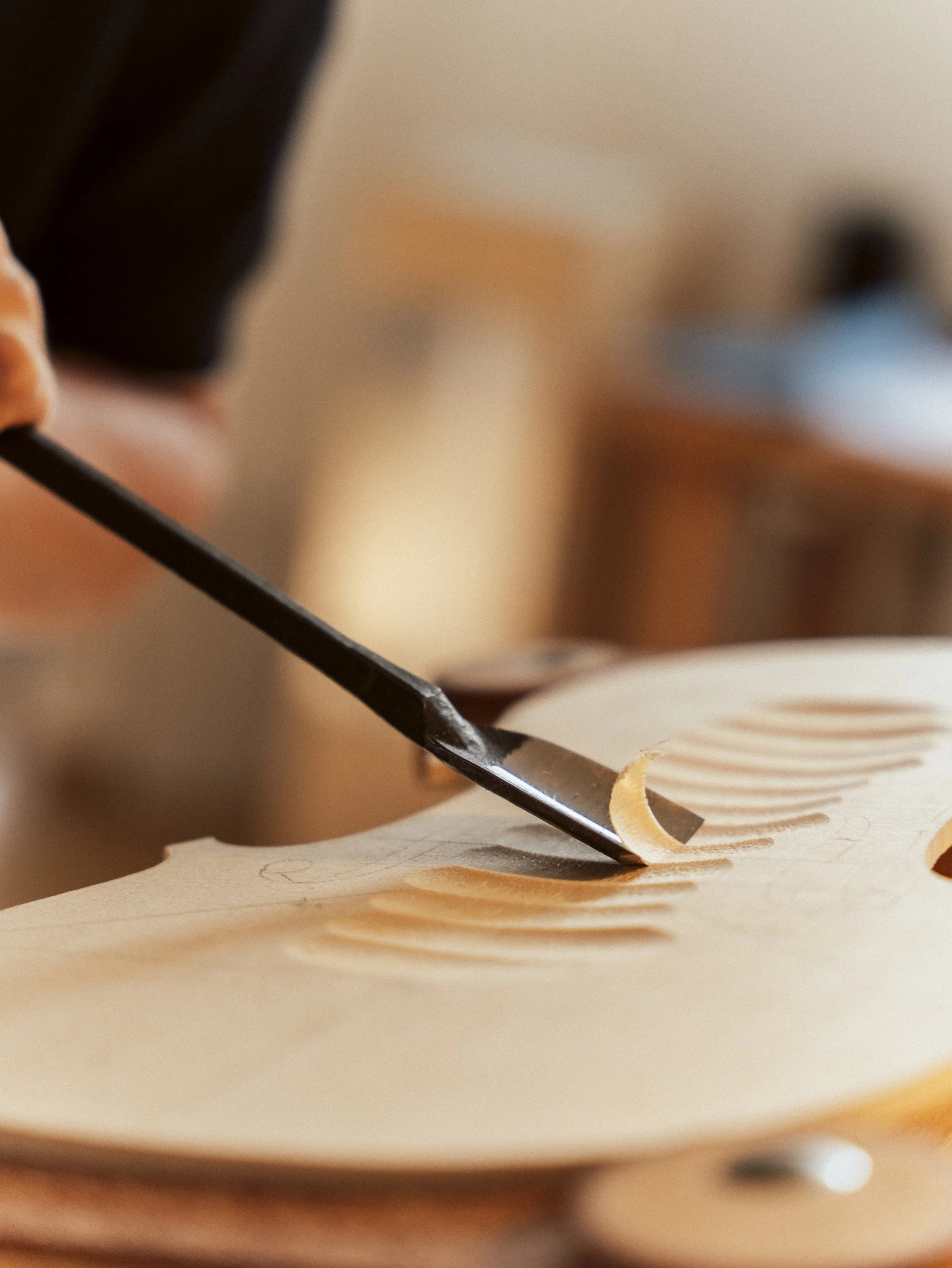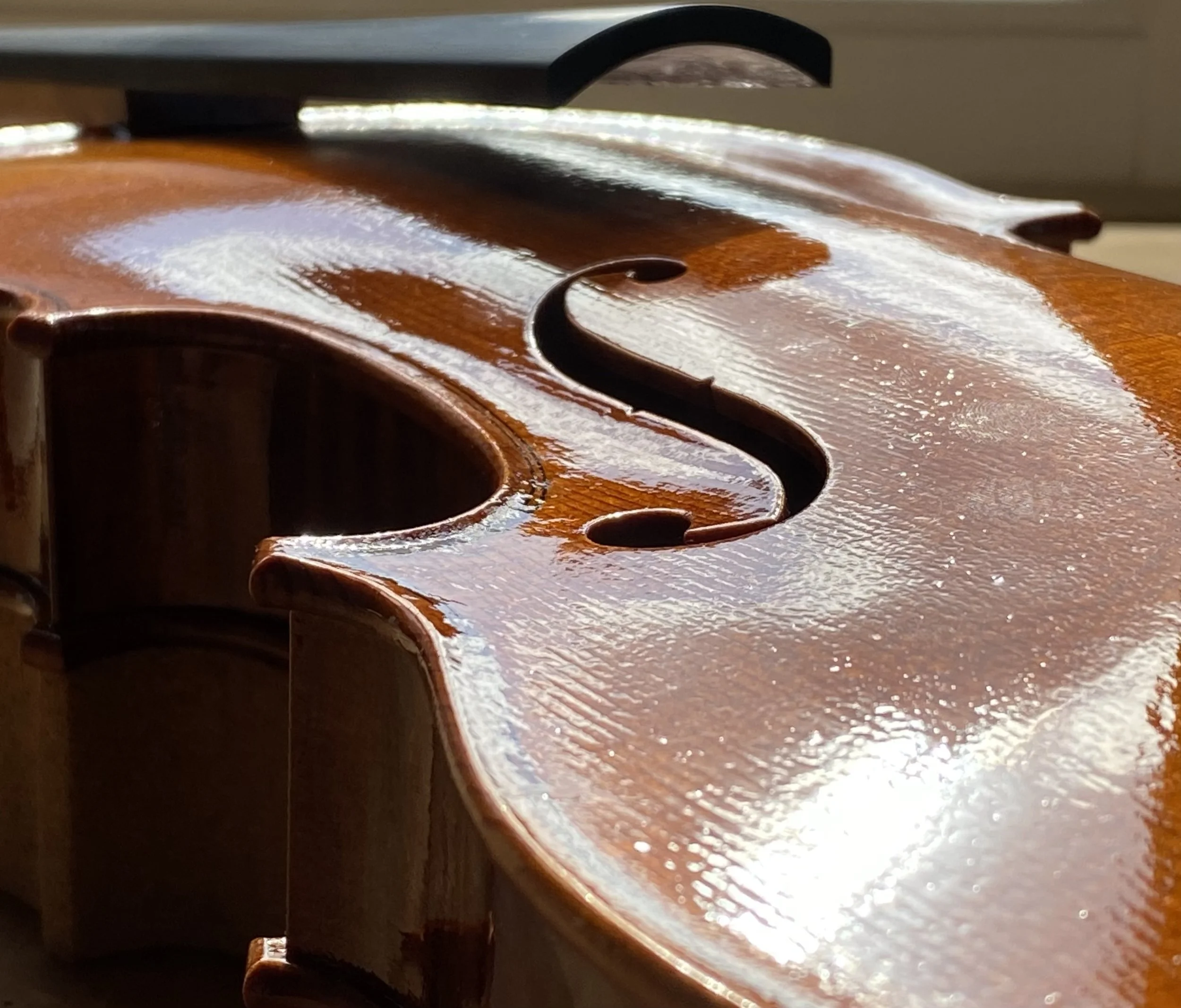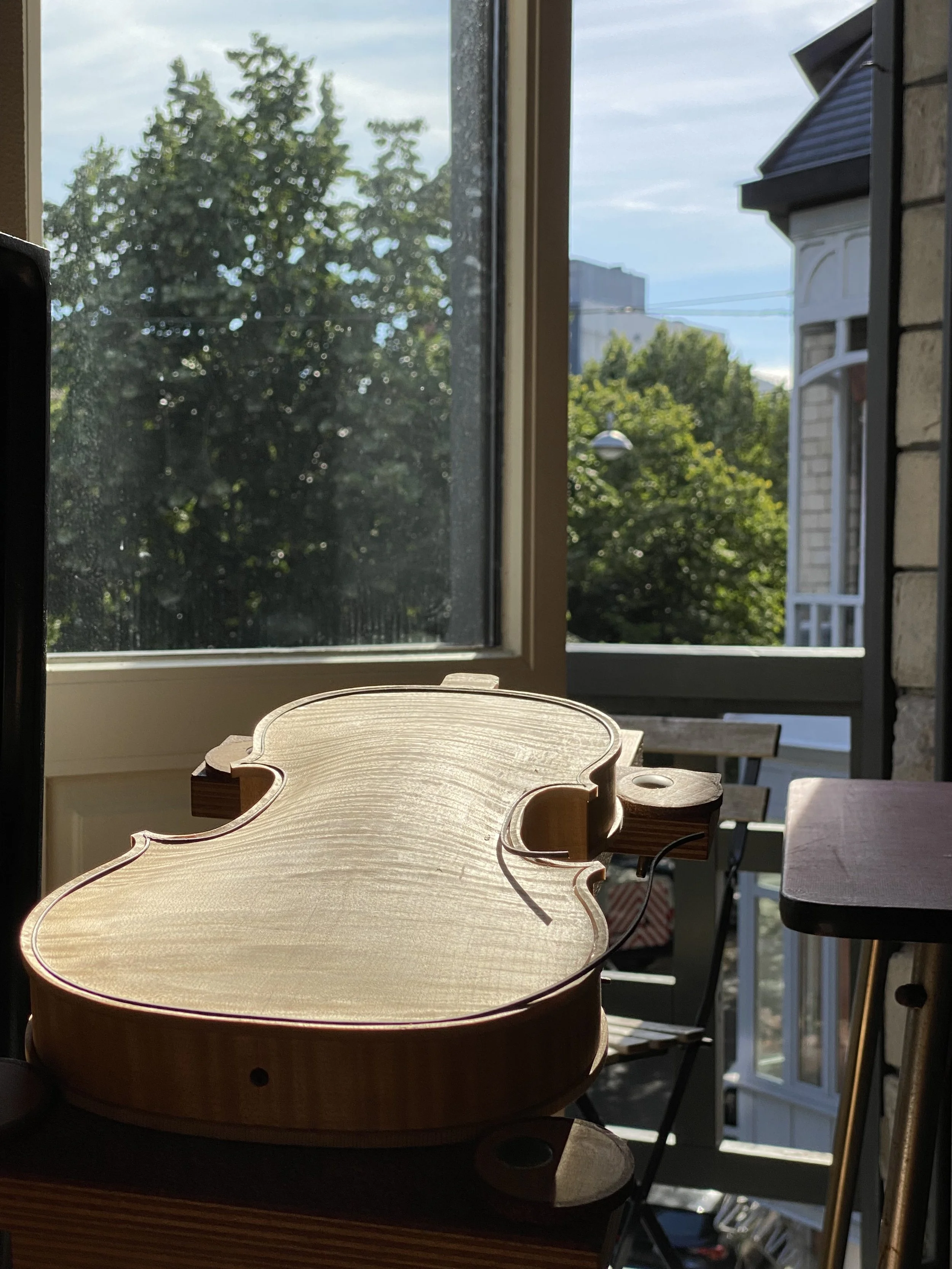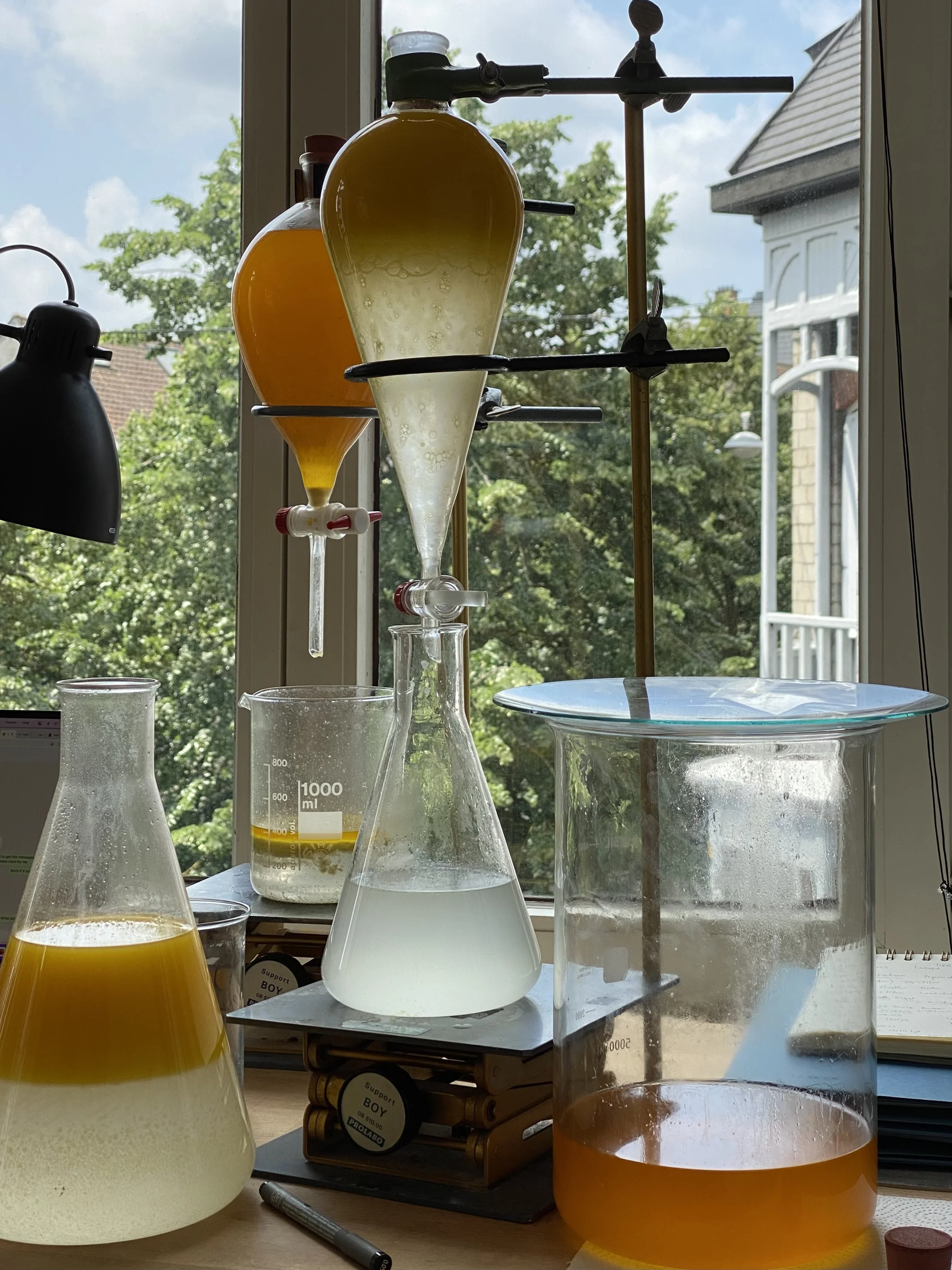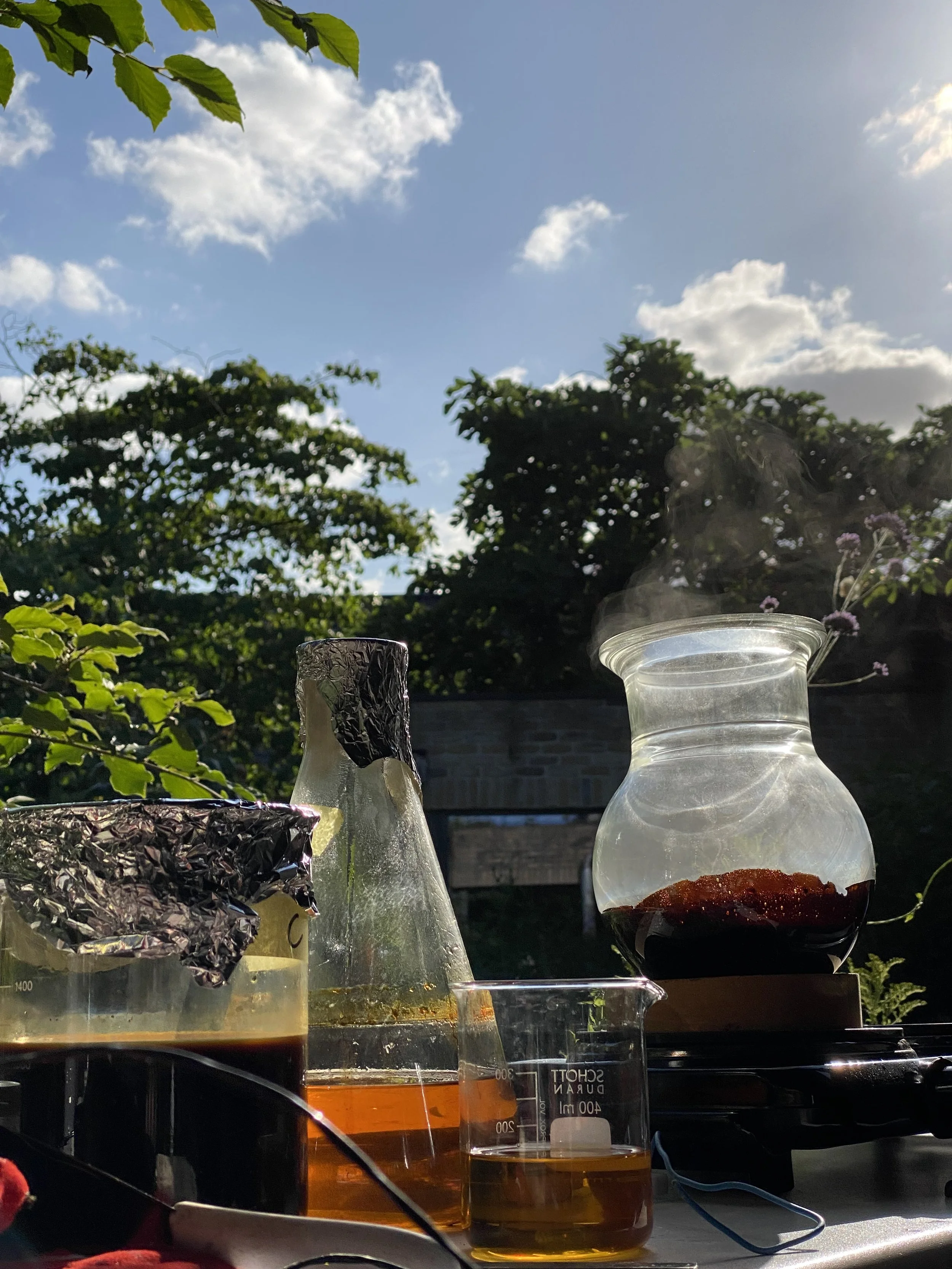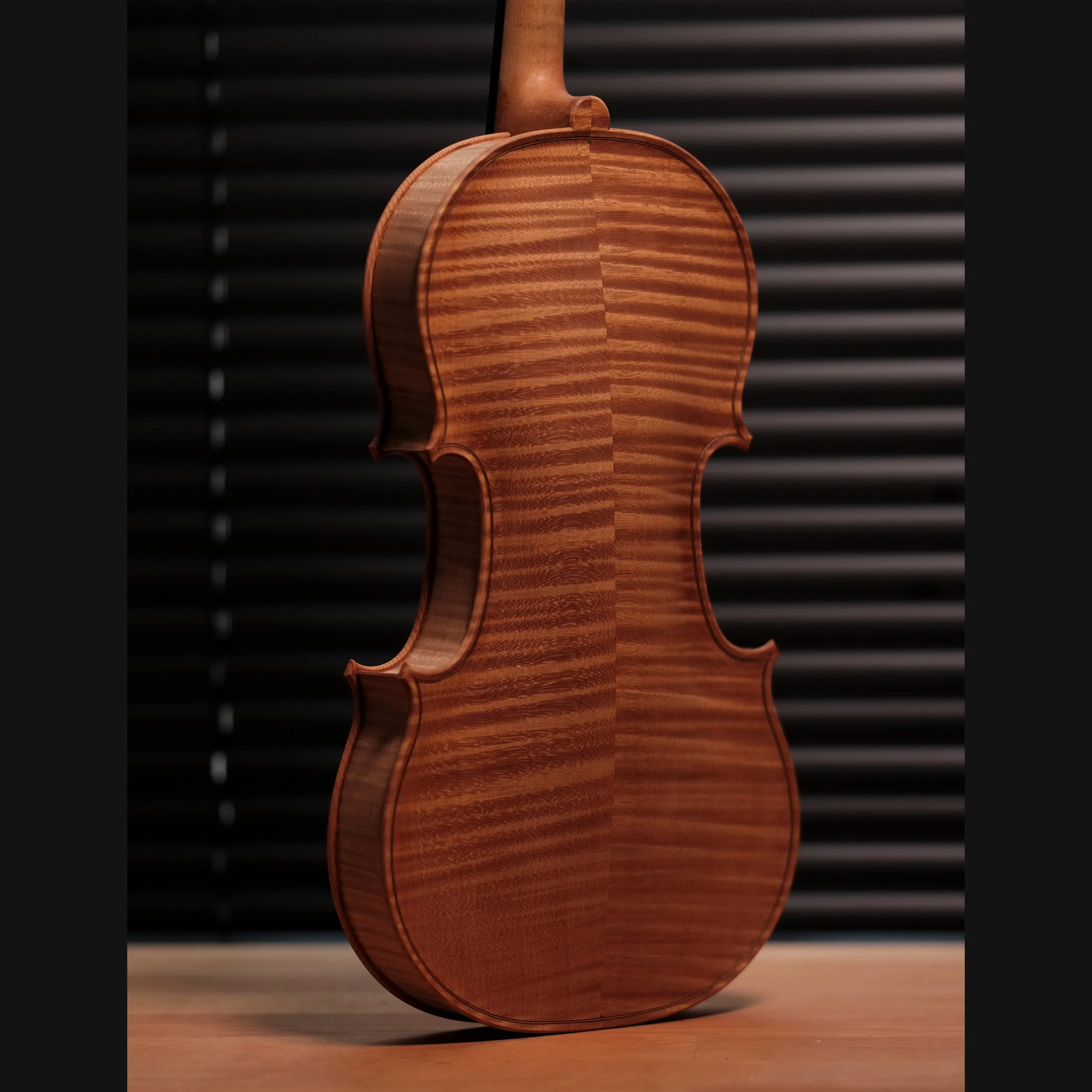
The making of an instrument starts with the careful selection of the right material. Only the finest quality wood is used. Each piece of wood is handpicked and sourced from specific regions: Spruce from the Dolomites, and Maple from Bosnia, Balkan & Carpathian forests. This wood brings out the desired visual beauty and acoustical properties resembling the exquisite instruments from our ancestral masters.
Materials
Every model I use is traced from the forms of the classical Italian masters. They are carefully designed using the traditional method, based on a proportional system. This method has been recently rediscovered and was once commonly known and mastered among craftsman, architects and builders during the times of the Amati, Guarneri & Stradivari families.
By following this approach and using the original principles we are one step closer to understanding the original intention of their designs.
Models
Every instrument is hand crafted in all its parts by the same pair of hands and mind. This handcrafted approach is rare in its survival today, solely because of the utter most importance of exploring and understanding every single piece of wood and its unique properties. The construction and thicknessing of every part compliments and balances the others and results all together in harmonious working instrument.
The methods I use derive from a tradition which has been inherited from generations of violinmaking. It not only assures certain acoustical properties but equally aesthetical characteristics that we can find in the instruments of the old masters.
Construction
Most of the general impressions we have from an instrument derives from its varnish. Firstly, it brings an aesthetical empowerment of the woodwork that lies underneath this thin layer of resin and linseed oil, but equally, it ensures the durability and specific sound characters of every instrument.
The knowledge of making varnish and pigments retraces back even long before the first ‘violin’ was made. It is an art in itself that was used and developed by many craftsmen and artists throughout history. It could be considered to have been already perfected already by the time the Cremonese masters started to use it on their instruments.
The process of making varnish is a simple yet forgotten art which brings therefore a lot of myth and mystery when it comes to its recipes and application. A lot of recent research provides us a pretty clear view of how these beautiful instruments where once varnished.
The varnish consists generally of linseed oil and resin which are heated together in specific quantities for a certain time.
Varnish
The sound characteristics of an instrument are defined from the first moments, when the wood is chosen, and are the priority consideration throughout the whole process of designing, making and varnishing of the instrument. A lot of the tonal character of the instrument is decided during the making, but of course for the instrument to be able to fully resonate to its potential we need the relation between the moving string and the full movement of the sounding instrument to be perfectly in balance with one another.
For an instrument to sound it’s best, there are many variations personal taste in sound and playability to be taken in consideration. This requires a close collaboration and understanding between the musician, the instrument and its maker.


